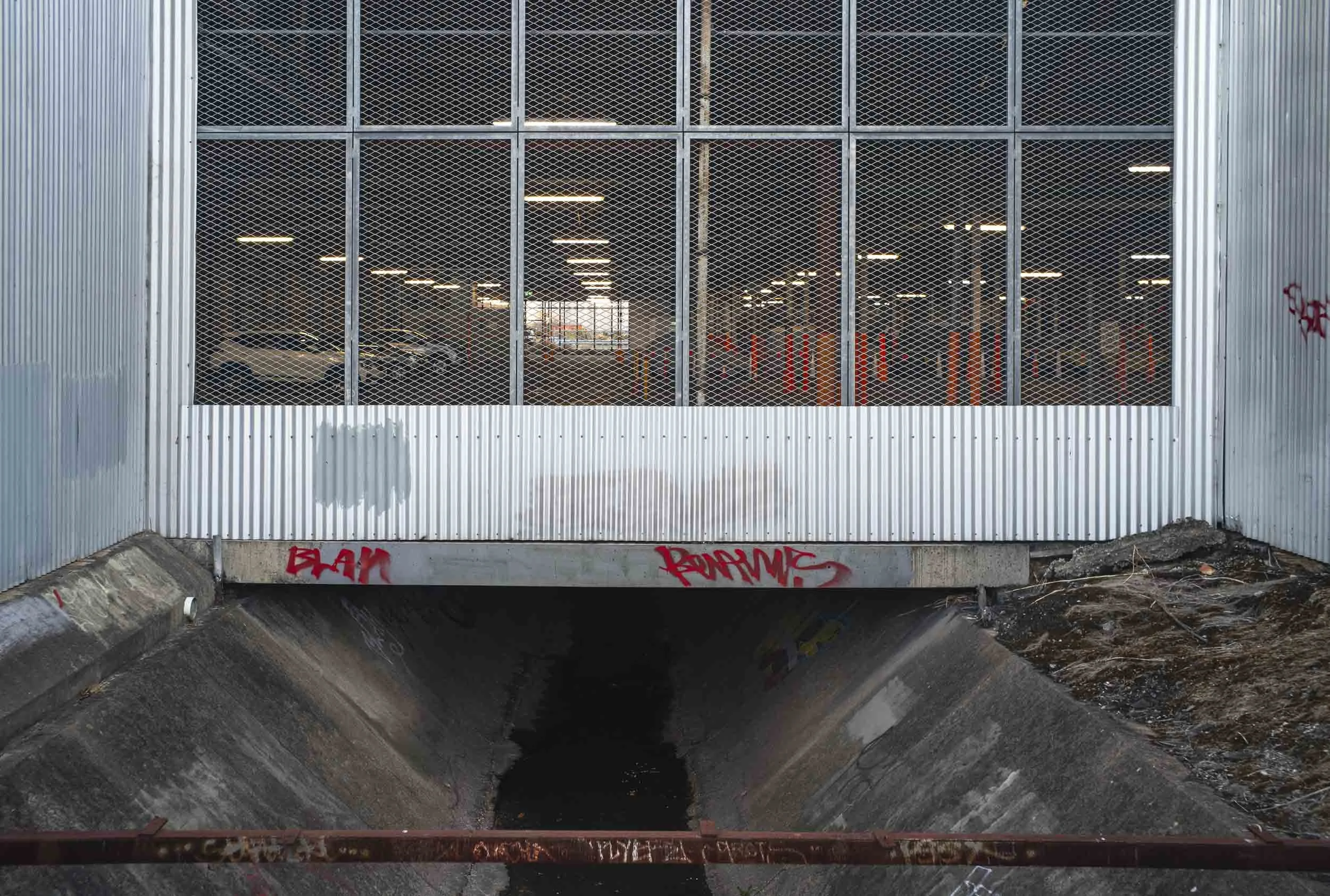Keswick Creek
I wandered around Mile End South with Maleko in the late afternoon last week, returning to where I’d walked several years ago. Little had changed. We walked around Scotland, London and Manchester Streets. What caught my eye was the way Keswick Creek had become a culvert or a constructed drain, presumably to manage storm water flows. It’s definitely not a creek.
Keswick Creek, (Scotland St) Mile End
The water quality is low. No fish can live there as there is no food for them. There is nothing to attract water birds. There are no frogs and insects, or a diversity of sedges, rushes, melaleucas and other vegetation along the banks. So no platypus. It’s an ecological destruction of a creek in industrial Adelaide.
The South Parklands Creek and the Glen Osmond Creek combine in Unley (just west of King William Rd ) to form Keswick Creek, which then flows under the Show Grounds surfacing on the western side of the Seaford Railway line. This concrete lined channel goes through the Keswick Military Barracks, goes underground at Anzac Highway, then re-surfaces near the corner of Kent and Everard Rds in Mile End South. It is a concrete lined channel in Mile End (the section I photographed) then it flows between houses in Richmond to eventually join up with lower Brownhill Creek on the eastern side of Adelaide Airport in West Torrens. The concrete line channel dates back to the 1930s and the Mile End South section has insufficient capacity for large stormwater flows. Hence the flooding.
There seems to be no effort to rehabilitate the large sections of Adelaide’s open drainage system (Brown Hill Creek, Keswick Creek, Park Lands Creek, and Glen Osmond Creek) so they form an ecologically vibrant creek rather than a drain. These creeks have a low level of flood protection and a long history of flooding, and so the management emphasis continues to be on storm water management to mitigate flooding to help safeguard properties in a significant flood event. This into redone through a combination of stormwater flow detention, diversion of high flows and watercourse upgrading for greater flow capacity.
Keswick Creek, (Manchester St) Mile End
Rehabilitation of the drain into a living stream does not appear to be an option for the Mile End section. It appears that he opportunity to reconceptualise the urban drainage system as a holistic and integrated network of ecologically restored streams is not being taken up. It is still appears to be the false choice between designing for people or for nature rather than both.


